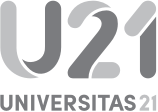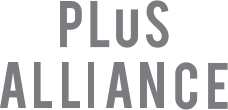Planning for your Research Needs
Each project at the BMSF incurs costs in terms of instrument time, sample preparation and staff input. It is necessary that a part-contribution to these costs be made by the users, and, so far as possible, that these costs are planned for and included in the budget of research proposals. Most access fees at the BMSF are charged on the basis of the hours of instrument time used.
Public sector researchers are charged a base hourly cost (Academic Rate) that is tied to the actual operational costs to provide this access. Government and institutional infrastructure funding contribute to this base rate to reduce it to a net user charge. It is recommended that budgets in research grant applications list the total net costs requested from the funding agency and, in separate columns, the Institutional and other Government contributions to the base access costs. The access fee schedules in this site show the base rates and the contributions to these from all sources.
The BMSF can provide assistance in preparing and justifying grant budgets the following ways:
- Determining an appropriate number of hours of access required by the project
- Describing the nature of the mass spectrometry to be undertaken
- Providing a clear statement of the contributions to the costs for analysis are subsidised institutionally and otherwise.
Example of budget line for year 2 (ARC):
| |
ARC |
University |
Other |
Total |
| Advanced proteomic mass spectrometry (320 hrs @ $86) |
$8,000 |
$16,000 |
$3,520 |
$27,520 |
Example of Justification of Funding (ARC):
The research project requires the proteomic analysis of affinity pull-downs of subcellular fractions at the rate of 5 samples per week for 40 weeks in years 2 and 3 with an estimated 8 hours instrument time per 5 sample. The base cost for student operated access to mass spectrometry at the BMSF is $86/hour to which the university contributes $50 (UNSW projects) and NSW Government Funding tied to NCRIS contributes $11. A balance of $25 is requested from the ARC.
If space permits add further specific explanation of why mass spectrometry is necessary, for example: "Tandem mass spectrometry combined with liquid chromatography is, at present, the most effective method of confident protein identification and the elucidation of post-translational modification of proteins."
Required Acknowledgement
All research publications containing data obtained with resources at the BMSF are required to explicitly acknowledge this with the following wording or similar wording having the same meaning:
Mass spectrometric results (or specify this more precisely) were obtained at the Bioanalytical Mass Spectrometry Facility within the Mark Wainwright Analytical Centre of the University of New South Wales.
{Insert this sentence only if the the BMSF provided any "omic" analysis: This work was undertaken using infrastructure provided by NSW Government co-investment in the National Collaborative Research Infrastructure Scheme (NCRIS).} Subsidised access to this facility is gratefully acknowledged.
Details of these publications should be sent to the BMSF for reporting purposes.






